With this trip planned over a year in advance, I knew summer 2025 would be one for the books - and I was right; my 11-day journey aboard the luxury liveaboard Dewi Nusantara did not disappoint. Translating to Goddess of the Archipelago, we sailed this classically designed vessel to the remote Cenderawasih Bay in Indonesia, where I enjoyed scuba diving with whale sharks and photographing endemic species. And that was just the beginning...
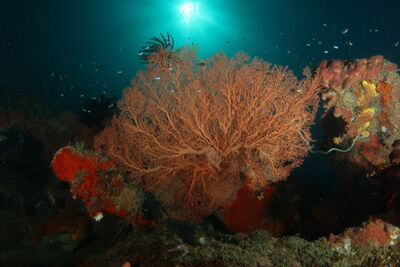
All aboard the Dewi Nusantara
I felt right at home from the moment I stepped on the Dewi. The liveaboard is a 191ft wooden schooner with three masts and space for up to 18 guests - a masterpiece of engineering. Sitting wide and deep, she's exceptionally stable, even in the roughest of seas. The two large tenders made transfers to and from the dive sites easy and comfortable, and the 25 crew members were always on hand to ensure we had a memorable experience.
Returning from each dive to the crew's beaming faces and unanimous 'heeeyyyyy' was one of my favourite parts of the trip. They shouted as loudly as possible, and even the captain gave us a post-dive high-five. It felt like one big family, where nothing was too much trouble.
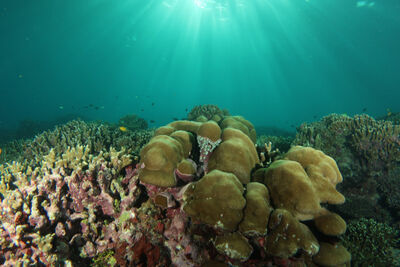
Setting sail for Cenderawasih Bay
Sitting pretty on the east side of West Papua's Bird's Head Peninsula, Cenderawasih Bay, the lesser-known cousin to Raja Ampat, feels like a land that time forgot. Off the beaten track for most travellers, Cenderawasih Bay National Park is Southeast Asia's largest, spanning over 3.7 million acres and with more than 310 miles of coastline. Attracting far fewer visitors than Raja, the bay boasts untouched and remote dive sites.
Typically, the only way to experience this region is via liveaboard, with just a handful of operators holding permits to offer trips at specific times of the year. We didn't see another vessel for the entire 11 days - talk about exclusive. To sail in the region, a ranger onboard must meet with local villages and obtain permission to dive their reefs. This was standard procedure every morning aboard the Dewi Nusantara.
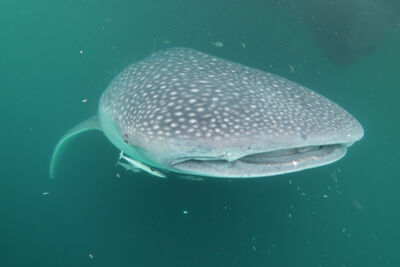
Up close and personal with whale sharks
Beyond its exclusivity, the region's main draw is the opportunity for close encounters while scuba diving with whale sharks. Few places offer this, but in Cenderawasih, divers can spend extended time with them as they feed beneath the bagans (fishing platforms) of Kwatisore. These gentle giants are drawn to the platforms by small fish released by local fishermen. In return for allowing these interactions - and for helping maintain a respectful environment - fishermen are compensated by dive operators or conservation programs. The symbiosis between the two is a glowing example of co-existence and sustainable tourism.
Over two days, we saw not one but five whale sharks, and I found myself just metres away from the largest fish in the sea. A few guests were even accidentally tail-whacked - a reminder to keep a safe distance from them! Most of the whale sharks in the bay are young adult males, and while they're present year-round, July and August are the best months to visit.
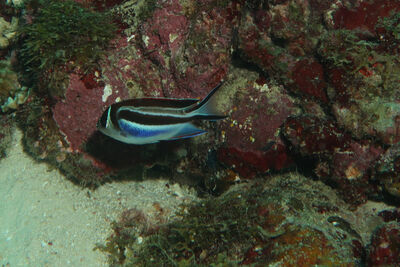
Endemic encounters
For the fish nerds and budding marine biologists among us, Cenderawasih offers the chance to spot endemic species at much shallower depths than they're usually found. While ornate angelfish are typically found at depths beyond recreational limits, we encountered these shimmering fish between 25 and 30m. In total, at least 15 species are exclusive to the region, including Caitlin's Dottybacks, Cenderawasih long-nosed butterflyfish and fairy wrasses. I made it my mission to photograph each endemic we saw, though some were quite shy!
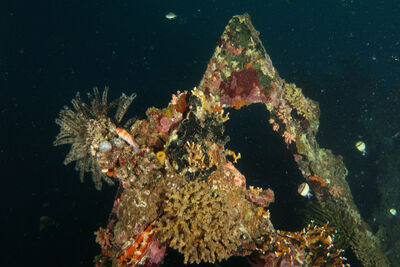
Dive into the past
For those seeking historical diving, the bay's World War Two wrecks won't disappoint. From scuttled US ships to rusting Japanese warships and abandoned aircraft, Cenderawasih offers a rare glimpse into the past. Manokwari's Pillbox Wreck was the most intriguing to me. Adorned with baby pink soft corals, the wreck was alive with schools of yellow-striped goatfish and snapper, gathering in the shadows of its walls. Here, I encountered one of the largest fields of Turbinaria cabbage coral I've ever seen, where clams, damselfish, chromis and butterflyfish sought shelter amid its folds.
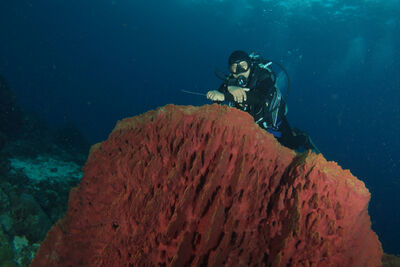
Barrel sponges and Birds of Paradise
Aside from the wrecks, the bay offers excellent reef diving sites. I saw some of the largest barrel sponges I've ever witnessed and admired sloping walls decorated with towering sea fans. The reefs also host all manner of critters - think nudibranchs, pipefish and porcelain crabs.
Though the region's tourism is growing, Papuan culture remains strong, with locals continuing subsistence fishing and simple living. Around the villages you'll hear cockatoos, hornbills and if you're lucky, the Bird of Paradise (known locally as Cenderawasih). Once hunted for their plumage, these birds now attract eco-tourists, providing a vital source of income for the remote villages.
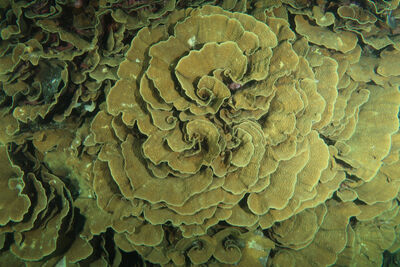
That's a wrap
My closing thoughts? Pure awe and inspiration. For those craving adventure in a remote region with guaranteed whale shark diving and up-close encounters, this is the itinerary for you. And if you're seeking top-notch service and liveaboard luxury, the Dewi is your vessel.
















